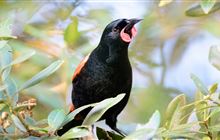Predator Free 2050 programme on track
Archived content: This media release was accurate on the date of publication.
Introduction
Aotearoa New Zealand has taken significant steps towards Predator Free 2050 in the five years since the launch of this ambitious goal, says DOC.Date: 10 June 2021
A Predator Free 2050 five-year progress report was released today at a Predator Free 2050 Summit held at Te Papa Tongarewa in Wellington to celebrate achievements and discuss approaches to working on the challenges ahead.
The report outlines achievements towards ridding the country of the most harmful introduced predators – rats, possums, and mustelids such as stoats.
DOC Programme Manager Predator Free 2050 Brent Beaven says it’s important to celebrate the significant progress made so far.
“The late Sir Paul Callaghan called it Aotearoa’s ‘moon shot’ and I think he would have been proud of the way New Zealanders have together risen to this challenge and begun to turn that dream into reality.
“Over 3000 of our native land species are at threat or risk of extinction but we know our wildlife can rebound in areas free from predators as we’ve seen on our predator free offshore islands and fenced mainland eco-sanctuaries.
“The progress report shows we have made substantial headway against the seven interim targets set in the Predator Free 2050 national strategy to guide work to 2025.”
In the past five years 19 landscape-scale predator eradication projects have launched across the country, and good progress is being made on removing predators from large mainland areas and keeping them out without the use of fences.
The area where predators are suppressed to protect our native wildlife and forests has increased substantially in the past five years and already exceeds our 2025 target.
Over 110 uninhabited islands are currently predator free, but the size of remaining islands such as subantarctic Auckland Island means eradication while proven feasible, will take more time than by 2025.
Whānau, hapū and iwi have a key role in designing and delivering predator management projects in their rohe, and the iwi-led projects launched so far pave the way for more to follow.
Community and urban trapping groups have gone from strength to strength with groups like Predator Free Wellington and Capital Kiwi getting closer to their eradication goals and Predator Free initiatives in Auckland and Dunedin achieving results.
The science community has ramped up collaboration in research to improve the cost, speed, and scale of predator eradications, and continues to strive for ‘break through’ technology.
“Considerable momentum has built across the Predator Free programme and the way Kiwis have rallied and got in stuck in working towards this goal has been truly impressive,” says Brent Beaven.
“Creating a Predator Free Aotearoa will only be achieved by government agencies, communities, whānau, hapū and iwi, businesses, philanthropic groups, farmers, scientists and non-government organisations, all working together on a larger scale than we ever have before.”
The Predator Free 2050 national strategy, launched in 2020, will play a key role in guiding the way forward using a collaborative process to align investment in research and predator free projects.
The Government has shown its support by investing over $300 million on Predator Free initiatives, which bolsters other funding from local government and philanthropic organisations as well as the time and effort invested by volunteers and community groups.
Contact
For media enquiries contact:
Email: media@doc.govt.nz

